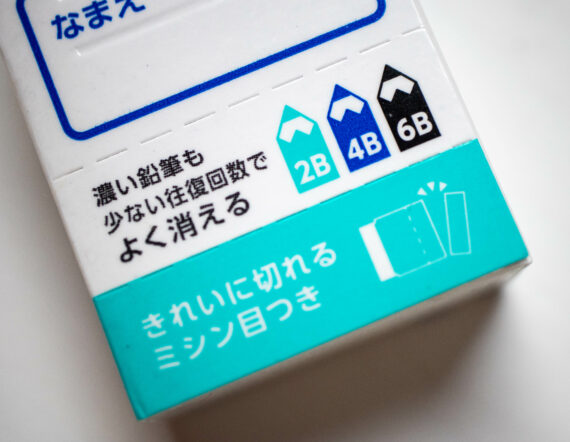Staedtler’s sugar cane / corn / olive eraser

Today: a look at a new eraser from Staedtler. I bought this eraser in August at Kaufland, a German supermarket-chain that is part of the same group as Lidl, on offer for €1.09 (~£0.92; $1.16). The normal price seems to be €2.20 (~£1.85; $2.33).

The packaging advertises it as being made with a minimum of 56% renewable materials. This made me curious to find out more. Luckily Mr. Rüdel from Staedtler was able to provide some more details: the chalk that is typically used when producing this type of eraser has been replaced by olive pomace, i.e. the solid remains of the olives after pressing for olive oil. The eraser has been available since Autumn 2023.

According to the official web page for this eraser, the plant flour that replaces the chalk can also come from corn. Additionally, the sleeve paper is made from by-products of sugar cane harvest..

This all sounds great, but the question now is whether the eraser performs well at erasing.
Luckily the 526 83-5 (that’s the official article number) doesn’t disappoint. Its performance is comparable to the well-known Mars plastic eraser, also by Staedtler.

My favourite erasers are still dust-free ones, but this is a nice performer with the added bonus of being made from renewable materials.
Price: August 2024
Exchange rates: October 2024
Staedtler’s sugar cane / corn / olive eraser Read More »























